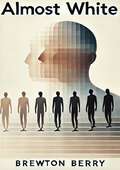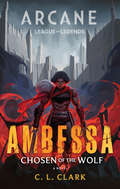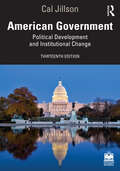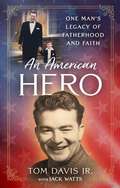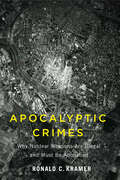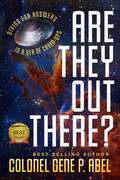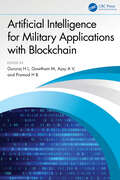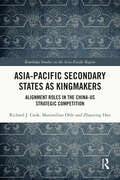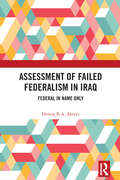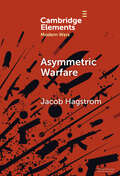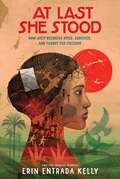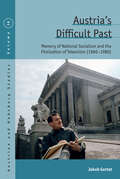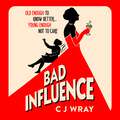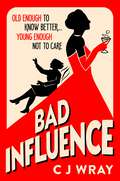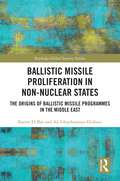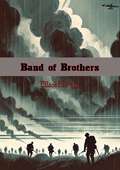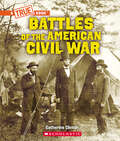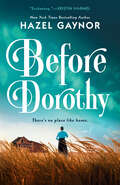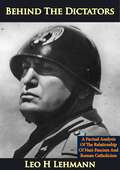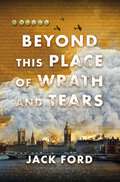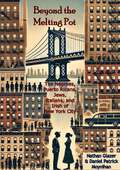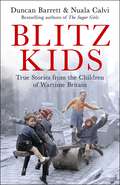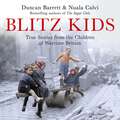- Table View
- List View
Almost White
by Brewton BerryAlmost White by Brewton Berry is a compelling exploration of the complex identities and lived experiences of racial and ethnic groups that occupy the ambiguous space between traditional categories of "black" and "white" in the United States. Through meticulous research and vivid storytelling, Berry examines communities such as the Melungeons, the Cajuns, and other historically marginalized groups that defy easy classification, shedding light on their struggles, adaptations, and contributions to American society.Berry delves into the historical, social, and cultural forces that have shaped these groups, addressing the tensions of assimilation, discrimination, and self-identification. He vividly portrays their attempts to navigate a society often defined by rigid racial hierarchies, uncovering the resilience and ingenuity of these communities in the face of exclusion and prejudice.With empathy and academic rigor, Almost White challenges readers to rethink the simplistic binaries of race and ethnicity, offering a nuanced perspective on the fluidity and complexity of identity. By weaving historical analysis with personal stories and field observations, Berry not only provides a deeper understanding of these groups but also prompts broader reflection on the intersections of race, culture, and belonging.This groundbreaking work is essential reading for anyone interested in sociology, anthropology, or American history, as well as those seeking to understand the untold stories of communities often left out of mainstream narratives.
Ambessa: A League of Legends: Arcane Novel
by C. L. ClarkSet in the blockbuster and award-winning universe of League of Legends: Arcane and written by award-winning author C. L. Clark, discover a thrilling epic fantasy novel where Ambessa Medarda truly learns what it means to be a Chosen of the Wolf. Medarda over all. Ambessa Medarda: Warrior, general, mother. She is a woman to be feared, and the Medardas are unrivaled in their pursuit of glory. She has led conquests and armies. She has slain legendary beasts. She has made grave sacrifices in her ascent up the ranks. And for this she was rewarded: She entered the realm of death and was granted a vision of herself upon the throne of the vast Noxian empire. But before she can lead her empire, she must become head of her own clan. Yet the title is contested by her cousin and former confidante, Ta&’Fik. He knows the bloody sins of Ambessa&’s past. And he knows he cannot allow her to rise. They will fight a war for the very soul of the Medardas. But the war won&’t be fought on battlefields alone. Ambessa&’s daughter, Mel, can deftly break through the walls around anyone&’s heart, and she&’ll put her talents to use for her mother. Yet despite Mel&’s strength, Ambessa sees only a child who lacks her killer instincts. Mel knows she can be the leader Ambessa wants her to be, if only she gives her time. With her family betraying her, enemies closing in on all sides, and unseen forces moving in the shadows, every day proves more dangerous than the last. But Ambessa will not bow. She will burn the world down to claim her place in it.
American Government: Political Development and Institutional Change
by Cal JillsonHow politics in America works today, how it got that way, and how it’s likely to change through reform—these are the themes that pervade every chapter of Cal Jillson’s highly lauded American Government: Political Development and Institutional Change. Even in the midst of current challenges, America’s past is present in all aspects of the contemporary political system. Jillson uses political development and the dynamics of change as a thematic tool to help students understand how politics works now—and how institutions, participation, and policies have evolved over time to produce the contemporary political environment. In addition, Jillson helps students think critically about how American democracy might evolve further, focusing in every chapter on reform and further change.New to the Thirteeenth Edition Assesses the results of the Biden administration and the impact on the 2024 campaign of Biden’s unexpected replacement by Kamala Harris at the top of the ticket. Describes numerous ways in which the American political system has been affected by recovery from the Covid-19 pandemic, the demise of Roe v. Wade, inflation, and the border. Assesses the implications of the January 6, 2021 attack on the Capitol, the Trump trials, and what they mean for our political culture and partisan politics. Assesses the implication of "fake news" and "the move to mobile" for our politics.Explores the evidence for increasing polarization in public opinion, voting behavior, and the work of Congress and the courts. Details the impact that the Russian invasion of Ukraine and the war in Israel and Gaza had on U.S. foreign policy and national security alliances.
An American Hero: One Man's Legacy of Fatherhood and Faith
by Tom Davis Jr.An American Hero: One Man's Legacy of Fatherhood and Faith is a poignant and inspiring journey through four generations, revealing how one World War II survivor's resilience, integrity, and unwavering faith forged a life-giving legacy that transformed not only his family but also countless lives around him.With his highly successful business career winding down, Tom Davis Jr. knew the time had come to give voice to the insights and inspiration that have propelled him along a path of excellence in commerce and beyond. To do so, he quickly realized he needed to tell the harrowing story of his father: a servant-hearted World War II survivor, a leader and mentor, a man who emerged from the darkest depths of abandonment and loss to build a life-giving legacy that has blessed not only his son but countless others. An American Hero shines a spotlight not only on the author&’s dad but also on a colorful cast of real-life heroes and villains who played pivotal roles in shaping their descendants—sometimes for better, too often for worse. As this no-holds-barred, four-generation saga unfolds, you will be captivated by: the secrets to living a life of unmatched integrity and unshakable purpose how the author&’s father survived (and thrived) amid the pain of betrayal what it means to establish new patterns that can transform a family&’s destiny how our deepest wounds can become the seeds of healing and growth . . . and much more. In a sweeping, intricately woven tale spanning more than a century, the author invites you to draw inspiration from his father&’s hard-won legacy—his character and charisma, his toughness and tenacity—and to apply the wealth of wisdom you glean to your own life, work, and relationships.
Apocalyptic Crimes: Why Nuclear Weapons Are Illegal and Must Be Abolished (Critical Issues in Crime and Society)
by Ronald C. KramerIn 2023, the Bulletin of the Atomic Scientists set the iconic Doomsday Clock to ninety seconds to midnight—the closest to midnight, or civilization-ending apocalypse, it has ever been. Designed at the onset of the Cold War amid new fears of atomic weapons, the Doomsday Clock is a symbolic countdown to annihilation. Now, a generation later, the world is more vulnerable than ever to the nuclear weapons it sought to warn against. In Apocalyptic Crimes, Ronald C. Kramer reconsiders the immense danger these weapons pose to humanity, examining the use, threat to use, and continued possession of nuclear weapons from a criminological perspective. Kramer argues that any country holding on to its nuclear arsenal—including the United States—is committing a criminal act. Offering a sharp rebuke to the common claim that nuclear stockpiles serve to deter the escalation of conflict, Apocalyptic Crimes emphasizes the harm caused by the mere possession of these deadly weapons. It further considers the culpability of political officials, acting as representatives of the state, whose threatening statements about nuclear weapons contain actions or omissions that violate specific international laws. But Kramer also shows how a nuclear apocalypse might be averted and offers a pathway to disarmament. Through critical analysis and a specific criminology of nuclear weapons, Kramer outlines the political actions necessary to rewind the Doomsday Clock and pull the world back from the brink of destruction—before the clock strikes midnight.
Aracy de Carvalho and Jewish Rescue from 1930s Germany: A Righteous Brazilian
by Mônica Raisa SchpunAracy de Carvalho (1908-2011), 'Righteous Among the Nations', saved German Jews by facilitating their emigration to Brazil in the late 1930s, while working at the Brazilian consulate in Hamburg. Margarethe Levy (1908-2011), who left for Brazil shortly after Kristallnacht with her husband, was one such case. In the late 1970s, she claimed the title of Righteous from Yad Vashem for Carvalho, who had become her lifelong friend. The main thread of this book follows the crossed migrations of these two women between Brazil and Germany, and the long friendship that brought them together. Through this axis it traces the migratory paths of a group of German Jews who, like Levy, left Hamburg to settle in São Paulo.
Are They Out There?: Diving for Answers In a Sea of Cover-Ups
by Gene P. Abel&“If you're ready to read a realistic approach to the possibility of alien life and whether we are visited by them, you will love Are They Out There? Diving for Answers In a Sea of Cover-Ups.&” – Readers&’ FavoriteNothing in the universe is unique and alone, and therefore in other regions there must be other earths inhabited by different tribes of men and different breeds of beast. - Titus Lucretius, De Rerum Natura circa 50BCE The question, Are They Out There? is not a new one. Since ancient times, humans have wondered about the potential of alien life. Between May 1, 2023, and June 1, 2024, alone, sightings of more than seven hundred unidentified aerial phenomena were reported-and twenty-one of these cases are still under investigation. They can't be explained by common objects. In Are They Out There? retired Colonel Gene P. Abel sifts through the accounts of military professionals and eyewitnesses alike in search of the truth about extra-terrestrial visitors. Discover what Colonel Abel has uncovered, and what the government might not be telling us, in this gripping new look at the history, and potential future impact, of UFOs, and alien contact. A newly released US report on unidentified flying objects says 143 sightings since 2004 remain unexplained. It does not rule out alien activity. - The New York Times, June 25, 2021
Artificial Intelligence for Military Applications with Blockchain
by Gowtham M Gururaj H L Ajay A V Pramod H BIn an era where advanced technology plays a critical role in maintaining national security, Artificial Intelligence for Military Applications with Blockchain investigates how combining AI and blockchain could transform military operations. This comprehensive guide offers creative answers for contemporary military problems while addressing the most important defense-related concerns, from data security to decision-making.It explores constrained networking middleware for defense applications, guaranteeing smooth communication under critical circumstances. This book starts with an in-depth examination of blockchain’s potential to improve document management across defense departments, then moves to a detailed discussion of security and privacy in military applications. The integration of AI and blockchain in military context is then the main topic of discussion, along with its advantages, disadvantages, and real-time applications.The potential of blockchain and AI to protect data and streamline operations is also explored, providing readers with insights into the military and healthcare sectors. This book offers a thorough examination of the military’s current and future use of AI, as well as a breakdown of cybersecurity issues and how blockchain technology is being used to improve military cybersecurity. A dedicated chapter examines the ways in which blockchain technology is being used by computational intelligence to transform the defense environment.Key features: Examines privacy and security issues in military blockchain applications Investigates military operations using constrained networking middleware Discusses integrating AI and blockchain technology for military applications Includes case studies of blockchain and AI uses in the military and healthcare Thoroughly examines cybersecurity issues and how blockchain technology can help This book is essential for military personnel, defense academics, and cybersecurity specialists interested in the use of AI and blockchain for defense. It presents real-world examples and case studies together with an outlook on how these technologies will influence future military operations.
Asia-Pacific Secondary States as Kingmakers: Alignment Roles in the China-US Strategic Competition (Routledge Studies on the Asia-Pacific Region)
by Richard J. Cook Zhaoying Han Maximilian OhleFocusing on the Asia-Pacific region, Cook, Ohle and Han investigate the escalating strategic competition between China and the US. They explore the dynamics of key regional secondary states caught in the middle, namely Japan, South Korea, the Philippines and Vietnam, emphasising their crucial role as potential kingmakers in the shifting balance of power.China and the US are competing to win influence over these regional linchpins to advance their geopolitical ambitions and ultimately win the strategic competition. Elucidating a “power of the weak paradox”, this contribution examines the challenging choices faced by these secondary states as they navigate alignment pressures, which influence the trajectory of the great power strategic competition. Drawing upon a range of first-hand government sources and regional perspectives, the authors take the temperature of the China-US strategic competition, revealing the intricate influencing dynamics and perilous choices linchpins are being pushed to make that will determine the fate of the Asia-Pacific.This is a timely resource for researchers, students, scholars and politicians navigating the complex realm of international relations by providing a profound exploration of power struggles, strategic choices and the often-overlooked role of secondary states.
Assessment of Failed Federalism in Iraq: Federal in Name Only
by Hemin R.A. AkreyiAkreyi investigates the development of federal relations in Iraq from the adoption of the new Federal Constitution in 2005 to the Kurdistan independence referendum in 2017.The book highlights the dysfunctionality of the Iraqi federal system even after the independence referendum and shows the true picture of the key issues between the Kurdistan Region and the Iraqi government in Baghdad. This informative content is presented in an easy-to-grasp manner, originating primarily from face-to-face interviews with relevant elites and decision-makers in Iraq as well as foreign diplomats.A valuable source for academics, researchers, journalists, and students of politics and international relations at the undergraduate and postgraduate levels in all universities, especially in the West and Middle East.
Asymmetric Warfare: Politics and Cultures of Violence in the Modern Era (Elements in Modern Wars)
by Jacob HagstromThe forces that fight asymmetric wars are so distinct that one side avoids direct military confrontation in favor of political, social, or otherwise unorthodox means of resistance. These conflicts have been a mainstay of modern times, though scholars have often separated them into various designations by era. Observers have referred, in chronological order, to Indian warfare, petite guerre (small war), guerrilla warfare, irregular or revolutionary war, and terrorism. The proliferation of labels over time has obscured the continuity of asymmetric wars throughout modernity. Stark distinctions in resources and capabilities have shaped the reasons why states and societies have decided to fight, and the manner in which they have fought. Across the modern era, mismatches arose in the domains of technology, intelligence production, and law. But in recent decades, so-called weak powers have neutralized many of the typical advantages of strong military states.
At Last She Stood: How Joey Guerrero Spied, Survived, and Fought for Freedom
by Erin Entrada Kelly"A courageous, uplifting biography of a woman almost lost to history.” –ALA Booklist World War II spy, Filipino guerrilla fighter, war hero, Medal of Freedom recipient, leprosy survivor, teacher, peacemaker . . . The legendary and inspiring life and work of Josefina “Joey” Guerrero is introduced to readers by two-time Newbery Medal winner, National Book Award finalist, and bestselling author Erin Entrada Kelly. For fans of Steve Sheinkin and Candace Fleming.Joey Guerrero, a native of the Philippines, was diagnosed with leprosy (Hansen’s disease) as World War II unfolded in Europe and Asia. Soon after the Japanese occupied the Philippines, Joey—believing she would die soon—joined the guerrilla movement to complete covert missions in support of the Allies. Because of her condition, she was rarely searched by Japanese soldiers, which allowed her to courier secret messages, including an invaluable minefield map that she taped to her back. She was eventually awarded the US Presidential Medal of Freedom and admitted to the National Leprosarium in Carville, Louisiana, where she lived for nine years. When she was cured and released, she found it difficult to find work because of racial discrimination and her health history and was forced to pawn her Presidential Medal to make ends meet. Eventually, she shed her previous identity. When she died in 1996, her obituary identified her as a secretary from Manila. But Joey Guerrero was much more than that—she was a hero who changed the course of history.Erin Entrada Kelly’s engaging nonfiction debut combines themes of the Philippines, World War II, the Asia-Pacific War, spy stories, Louisiana, immigration, disease and medicine, racism, perseverance, religious devotion, and hope. Illustrated with photographs, maps, and other illustrative material and featuring sidebars that clearly illuminate key moments in history, At Last She Stood is for readers and educators who love Candace Fleming, Deborah Heiligman, Christina Soontornvat, and Steve Sheinkin. Includes an author’s note, source notes, index, and other back matter.
Austria's Difficult Past: Memory of National Socialism and the Filmization of Television (1960-1980) (Austrian and Habsburg Studies)
by Jakub Gortat GortatThe role played by film in reshaping Austria’s post-war national identity is often studied within narrow historical and geographical margins. Film history traditionally focuses on either the work of a sole director, German cinematography, or the immediate aftermath of World War II, and neglects the link that exists between historical television films and Austria’s distinct culture of remembrance. In Austria’s Difficult Past, Jakub Gortat addresses this gap by providing a comprehensive analysis of television films produced by Austrian (ORF) and German television studios between 1961 and 1980. In doing so, he explores the way films mediated the burden of memory and the legacy of Austria’s complicity in the Nazi regime.
Bad Influence: A heartwarming and heartfelt mystery about a searching for treasure and finding redemption
by CJ WrayDon't miss the next heartwarming and hilarious book from CJ Wray -- available to pre-order now!There are three things Jennifer 'Jinx' Sullivan promised herself she would never do:1. Eat fast food.2. Go on a coach trip.3. Die without exacting revenge on the people who ruined her life.She's about to let herself down on the first two, but she can still keep her word on the third. On a coach trip to Florence,89-year-old Jinx is going to face her painful wartime history, unearth long-buried skeletons (quite literally) and plan long overdue vengeance on the worst best friend a woman ever had. That's the best friend who trained her in etiquette, cocktail-mixing and silent killing.It's going to be a tough journey - not least because she's sharing it with twenty senior citizens and a recalcitrant teen. But Jinx knows that some promises are worth keeping, no matter how hard it may be.Praise for CJ Wray: 'Not all heroes wear capes, some wear M&S cardigans! A triumph!' Mike Gayle'A sublime mix of comedy, drama and adventure' Jill Mansell'Just pure joy from start to finish' Alexandra Potter'Funny, thrilling and brilliantly researched' SJ Bennett'It's utterly wonderful' Annie Lyons
Bad Influence: A heartwarming and heartfelt mystery about a searching for treasure and finding redemption
by CJ WrayDon't miss the next heartwarming and hilarious book from CJ Wray -- available to pre-order now!There are three things Jennifer 'Jinx' Sullivan promised herself she would never do:1. Eat fast food.2. Go on a coach trip.3. Die without exacting revenge on the people who ruined her life.She's about to let herself down on the first two, but she can still keep her word on the third. On a coach trip to Florence,89-year-old Jinx is going to face her painful wartime history, unearth long-buried skeletons (quite literally) and plan long overdue vengeance on the worst best friend a woman ever had. That's the best friend who trained her in etiquette, cocktail-mixing and silent killing.It's going to be a tough journey - not least because she's sharing it with twenty senior citizens and a recalcitrant teen. But Jinx knows that some promises are worth keeping, no matter how hard it may be.Praise for CJ Wray: 'Not all heroes wear capes, some wear M&S cardigans! A triumph!' Mike Gayle'A sublime mix of comedy, drama and adventure' Jill Mansell'Just pure joy from start to finish' Alexandra Potter'Funny, thrilling and brilliantly researched' SJ Bennett'It's utterly wonderful' Annie Lyons
Ballistic Missile Proliferation in Non-Nuclear States: The Origins of Ballistic Missile Programmes in the Middle East (Routledge Global Security Studies)
by Karim El-Baz Ali Ghanbarpour-DizboniThis book offers an exploration of ballistic missile proliferation in the Middle East and also delves into the geopolitical landscape to unveil a narrative of contemporary Middle Eastern history.The central focus of this book is to decipher the pivotal moments when three regional powers of the Middle East - Egypt, Saudi Arabia, and Iran - embraced ballistic capabilities as a strategic response to military vulnerabilities. The authors contend that the very essence of ballistic proliferation incorporates a tactical rationale provided by military needs that varies from one state to another, and it is upon the assessment of these military needs that the decision to procure ballistic missiles is made. Offering a blend of theoretical insights and primary sources-based case studies, this book dissects the decision-making processes that spurred these states to choose ballistic missiles, despite their inefficiencies in delivering conventional payloads. The absence of an effective air force emerges as a catalyst, triggering what the authors term a ‘moment of ballistic consciousness.' Spanning three diverse regimes, the work provides a rich historical tapestry and untangles the complexities of political decisions with military implications, providing a fresh perspective on global power dynamics. This narrative sheds light on the intersection of military strategy, geopolitical realities, and the pursuit of ballistic capabilities that shapes the world's security landscape.This book will be of much interest to students of arms control, nuclear proliferation, Middle Eastern politics, and International Relations.
Band of Brothers
by Ernest FrankelErnest Frankel’s Band of Brothers is a gripping and deeply human story of courage, camaraderie, and survival set against the harrowing backdrop of World War II. Focusing on the bonds forged in the heat of battle, this powerful novel captures the sacrifices and struggles of a group of soldiers who find strength in their shared mission and unwavering loyalty to one another.The story follows a diverse group of men thrown together in the crucible of war. From their grueling training to the front lines of combat, Frankel vividly portrays the physical and emotional toll of their experiences. As they face the horrors of battle, they also navigate personal conflicts, moments of humor, and the fragile hope of returning home.Through his richly drawn characters, Frankel explores the complexities of wartime relationships—the tensions, the deep friendships, and the unbreakable brotherhood that forms when lives depend on one another. Each soldier’s story adds a layer of depth to the narrative, painting a moving and multifaceted picture of war and its impact on the human spirit.With its unflinching realism and poignant storytelling, Band of Brothers is both a tribute to the resilience of those who served and a meditation on the cost of war. This novel is a must-read for fans of historical fiction, military stories, and anyone seeking to understand the enduring bonds that form in the face of adversity.
Battles of the American CIvil War (A True Book)
by Catherine ClintonWhat were the most important battles of the American Civil War? Discover it with this book for young readers.More than 3 million men, women, and-yes-children fought in the Civil War. And more than 600,000 of them died. For four bloody years, fighting raged from Georgia to Pennsylvania and as far west as the Mississippi River. The war tested the strength of our country, as well as the fortitude of our leaders. Learn about the battles, generals, and everyday heroes that held the nation together.ABOUT THIS SERIES:The Civil War took place in America between April 1861 and April 1865. During the four-year struggle between the North and the South, approximately 10,000 battles were fought on land and sea, leaving 620,000 dead. As a result of the war, more than three million enslaved people gained their freedom. The four books in the "Exploring the Civil War" series examine the war's key people, places, and events, and its causes and consequences, making them the perfect tools to introduce children to one of the defining events in American history.
Before Dorothy
by Hazel GaynorLong before Dorothy visits Oz, her aunt, Emily Gale, sets off on her own grand adventure, leaving gritty Chicago behind for Kansas and a life that will utterly change her, in this transporting novel from New York Times bestselling author Hazel Gaynor.As featured in People ∙ Us Weekly ∙ Woman's World ∙ and more!Chicago, 1924: Emily and her new husband, Henry, yearn to leave the bustle of Chicago for the promise of their own American dream among the harsh beauty of the prairie. But leaving the city means leaving Emily&’s beloved sister, Annie, who was once closer to her than anyone in the world.Kansas, 1932: Emily and Henry have established their new home among the warmth of the farming community in Kansas. Aligned to the fickle fortunes of nature, their lives hold a precarious and hopeful purpose, until tragedy strikes and their orphaned niece, Dorothy, lands on their doorstep.The wide-eyed child isn&’t the only thing to disrupt Emily&’s world. Drought and devastating dust storms threaten to destroy everything, and her much-loved home becomes a place of uncertainty and danger. When the past catches up with the present and old secrets are exposed, Emily fears she will lose the most cherished thing of all: Dorothy.Bursting with courage and heart, Before Dorothy tells the story of the woman who raised a beloved heroine, and ponders the question: what is the true meaning of home?
Behind The Dictators: A Factual Analysis Of The Relationship Of Nazi-Fascism And Roman Catholicism
by Leo H LehmannBehind the Dictators by Leo H. Lehmann is a bold and meticulously researched exploration of the connections between Nazi-Fascist regimes and elements within the Roman Catholic Church. Through compelling analysis and historical documentation, Lehmann delves into the complex relationship between political authoritarianism and religious influence in 20th-century Europe.In this provocative work, Lehmann examines the ideological and practical alliances that emerged between key figures in the Catholic hierarchy and fascist leaders like Adolf Hitler and Benito Mussolini. He explores how shared interests, ranging from anti-communism to the consolidation of power, forged unlikely alliances and influenced the political landscape of the time. Drawing from historical records, speeches, and firsthand accounts, Lehmann provides a detailed and critical account of these interactions, revealing the extent to which religion and politics intersected during one of history’s darkest periods.While unflinching in its critique, Behind the Dictators also contextualizes the broader historical, social, and economic pressures that shaped these alliances. Lehmann’s analysis serves as both a historical study and a cautionary tale about the potential dangers of intertwining religious authority with political power.Ideal for readers interested in history, political science, or the dynamics of religion and power, Behind the Dictators offers a thought-provoking and challenging perspective on the role of institutions during times of upheaval. This book is a compelling resource for anyone seeking to understand the undercurrents that shaped the political and religious alliances of the 20th century.
Beyond This Place of Wrath and Tears
by Jack FordFrom award-winning journalist Jack Ford, a riveting and colorful dual timeline novel of Lee Carson, the heroic yet elusive female journalist who defied convention and danger to report from the front lines of WWII, combining breathtaking wartime narrative with a compelling Cold War espionage tale for fans of Christine Mangan, Pam Jenoff, Erika Robuck, and Kate Quinn. Washington, DC, April 1954: Lee Carson, former war correspondent, is frustrated that her journalism career has been relegated to society events and fashion stories. But when she receives a tip about a Russian spy in a high-ranking government position at the height of the Cold War, she feels the thrill of a story that she hasn&’t felt since she was on the front lines of the European theater . . . London, December 1943: As war rages on across Europe, twenty-two-year-old Lee Carson is waging a private battle of her own. An American-born correspondent for the International News Service, Lee is determined to cover the war from the field. But no woman, certainly not an attractive young woman with no military experience, will be allowed near the front lines. Lee is not easily dissuaded. And as the Allied forces prepare to take the fight to the enemy, her gift for boosting public morale is seen as a valuable weapon. Assigned to cover the build-up to the invasion of Nazi-held Europe, she constantly wrangles with authorities to get to the heart of the action. From talking herself onto a bomber and flying over the beaches of Normandy at the start of D-Day to other feats of daring, she witnesses and reports on the war&’s most pivotal moments. Told in dual timelines, Beyond this Place of Wrath and Tears is inspired by the story of an incredible woman who has largely been forgotten by history, and who, like many women in WWII, broke barriers in wartime only to find that upon the return home, she had to continue to fight for relevance in an entirely different way . . .
Beyond the Melting Pot; The Negroes, Puerto Ricans, Jews, Italians, and Irish of New York City
by Nathan Glazer Daniel Patrick MoynihanNathan Glazer and Daniel Patrick Moynihan is a groundbreaking sociological study that challenges the traditional notion of America as a cultural "melting pot." Focusing on the rich and diverse ethnic communities of New York City, the authors explore how these groups maintain distinct cultural identities while adapting to life in a bustling, dynamic metropolis.Through meticulous research and insightful analysis, Glazer and Moynihan examine the histories, social structures, and evolving roles of five key groups: African Americans, Puerto Ricans, Jews, Italians, and Irish. The book delves into how these communities navigated challenges such as discrimination, economic inequality, and political marginalization, while also shaping the city’s social fabric through their contributions to labor, culture, and civic life.Rather than blending into a homogenous whole, the authors argue, these groups have retained their individuality, creating a city defined by its diversity rather than uniformity. With its combination of data, firsthand accounts, and historical perspective, Beyond the Melting Pot offers a compelling look at the complexities of ethnicity and identity in America’s largest city.First published in 1963, this book remains a seminal work in urban sociology and ethnic studies, providing valuable insights for anyone interested in the enduring interplay between diversity and integration in urban life.
Blitz Kids: True Stories from the Children of Wartime Britain for the 80th anniversary of VE day
by Nuala Calvi Duncan BarrettPublished to celebrate the 80th anniversary of VE day'Betty heard the scream of bombs falling and the terrifying thud of explosions. Suddenly, there was a deafening bang, and her mother was thrown across the shelter. For a moment everything was lit up by a blood-red light. Then they were plunged into darkness...'When the Second World War began, there were 10 million children living in Britain. Many were evacuated to the countryside, but others stayed behind and witnessed the Blitz close-up in cities around the UK.Blitz Kids tells the remarkable true stories of children who spent their nights in cold, cramped air-raid shelters, hearing the rumble of planes and the crash of bombs overhead. Many woke up in the morning to find their homes and schools destroyed, their favourite toys buried beneath rubble, their pets lost and, in some cases, their families shattered. Yet amid the turmoil and tears, they found a way to enjoy their childhoods, collecting steaming-hot shrapnel, turning bombed-out houses into adventure playgrounds, and chasing American GIs for chocolate and chewing gum.From headstrong East-Ender Kitty to quick-witted Liverpudlian Christopher - and little Doreen, who survived the devastation of Coventry - Blitz Kids brings together the moving true stories of a remarkable generation now passing into history.
Blitz Kids: True Stories from the Children of Wartime Britain to commemorate the 80th anniversary of VE Day
by Nuala Calvi Duncan BarrettPublished to commemorate the 80th anniversary of VE Day'[The] stories are every bit as dramatic as those from the front lines and Barrett and Calvi have done an incredible job. Their poignant, page-turning book, filled with tears and joy, reminds us innocents always suffer' Daily Express'The 80th anniversary of VE Day takes place on Thursday 8 May and inspirational new book Blitz Kids captures the stories of some of the people who lived through, and still remember, that period' Sunday Express'Betty heard the scream of bombs falling and the terrifying thud of explosions. Suddenly, there was a deafening bang, and her mother was thrown across the shelter. For a moment everything was lit up by a blood-red light. Then they were plunged into darkness...'When the Second World War began, there were 10 million children living in Britain. Many were evacuated to the countryside, but others stayed behind and witnessed the Blitz close-up in cities around the UK.Blitz Kids tells the remarkable true stories of children who spent their nights in cold, cramped air-raid shelters, hearing the rumble of planes and the crash of bombs overhead. Many woke up in the morning to find their homes and schools destroyed, their favourite toys buried beneath rubble, their pets lost and, in some cases, their families shattered. Yet amid the turmoil and tears, they found a way to enjoy their childhoods, collecting steaming-hot shrapnel, turning bombed-out houses into adventure playgrounds, and chasing American GIs for chocolate and chewing gum.From headstrong East-Ender Kitty to quick-witted Liverpudlian Christopher - and little Doreen, who survived the devastation of Coventry - Blitz Kids brings together the moving true stories of a remarkable generation now passing into history.
Blitz Kids: True Stories from the Children of Wartime Britain to commemorate the 80th anniversary of VE Day
by Nuala Calvi Duncan BarrettPublished to commemorate the 80th anniversary of VE Day'Betty heard the scream of bombs falling and the terrifying thud of explosions. Suddenly, there was a deafening bang, and her mother was thrown across the shelter. For a moment everything was lit up by a blood-red light. Then they were plunged into darkness...'When the Second World War began, there were 10 million children living in Britain. Many were evacuated to the countryside, but others stayed behind and witnessed the Blitz close-up in cities around the UK.Blitz Kids tells the remarkable true stories of children who spent their nights in cold, cramped air-raid shelters, hearing the rumble of planes and the crash of bombs overhead. Many woke up in the morning to find their homes and schools destroyed, their favourite toys buried beneath rubble, their pets lost and, in some cases, their families shattered. Yet amid the turmoil and tears, they found a way to enjoy their childhoods, collecting steaming-hot shrapnel, turning bombed-out houses into adventure playgrounds, and chasing American GIs for chocolate and chewing gum.From headstrong East-Ender Kitty to quick-witted Liverpudlian Christopher - and little Doreen, who survived the devastation of Coventry - Blitz Kids brings together the moving true stories of a remarkable generation now passing into history.
